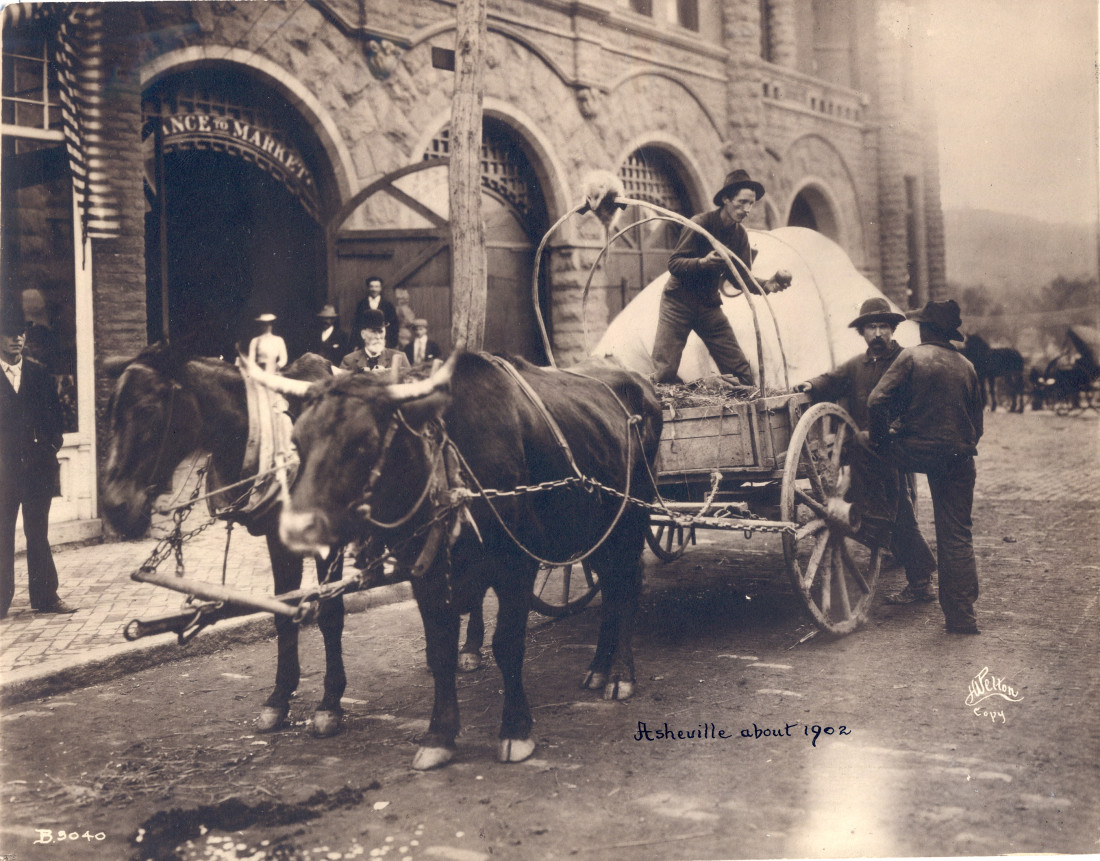We continue with W.A. Shafor’s 1911 investigation into Asheville. For those who missed the first part, you can find it here. Follow along with us each week to learn about different time periods in our city’s history, from various unique perspectives and views. Thanks as always to Pack Memorial Library’s Special Collections, North Carolina Room for all the assistance.
By W.A. Shafor (excerpted from a letter to his friends in his hometown of Hamilton, Ohio)
Livestock Prices Good
They raise a good many broadchested dogs with short tails that stick straight up and a few narrowchested sheep with long tails that hang straight down.
Sheep sell at $6.00 to $7.00 per head. And these mountain pastures look like ideal places to raise them. But butchers tell us nearly all the mutton used in Asheville comes from Chicago. Fat hogs are now selling at nine cents a pound, live weight.
Fully two cents higher than with us. Butchers say they can get all they want at the price now but during the past winter could not get enough at 12 to 13 cents.
We saw rather smooth thousand-pound steers sell in market here at 5 ½ cents [per pound]. But not enough are fed to supply the demand. Native hay made of coarse grass with plenty of weeds sell at $20 per ton.
Baled timothy hay $1.40 per hundred pounds. Ear corn retails at 75 cents per bushel, shelled corn at 80 cents, oats at 65 cents. Sweet potatoes 80 cents. Hens sell at 18 cents a pound, live weight, and chickens that weight 1 ½ pounds at 35 cents each.
Butter, very white but good, 30 cents. Comb honey 25 cents a pound. Yet with all this the natives are raising more boom poles than anything else. We can’t see what they raise them for as they have nothing to boom but mountains and a mountain can’t be boomed with a pole long enough to get it to market.
We are told that ten miles out from Asheville where ten years ago land sold at $1.00 to $1.50 per acre now sells at $50.00 per acre. It looks like a good place to raise honey and if I had to make a living here I’d get a bee line on a boom pole and a cow bait and fish for suckers, and let the women do the work…
Next week Shafor will tell us all about Asheville’s well-fed convicts. Stay tuned.



Great stuff. Keep ’em coming!
Many thanks to Thomas Calder for engaging us in the history of this beautiful place we call home! Keep up the great work!!
This is a great addition to Mountain Xpress – looking forward to more from Mr. Calder.